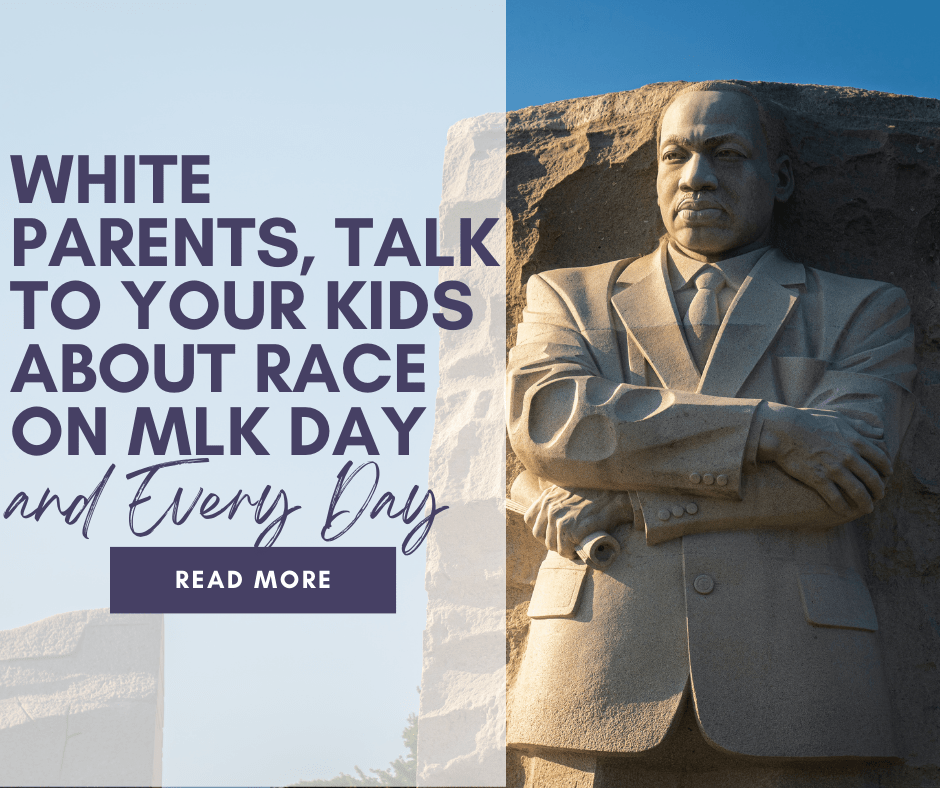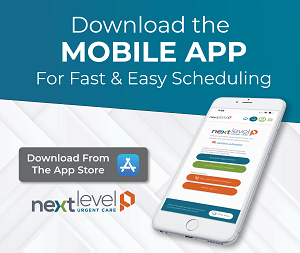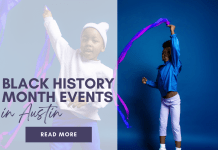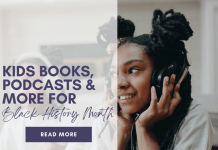Looking back on my elementary school years, I have a few memories of learning about the civil rights movement. I remember drawing a smiling picture of Dr. Martin Luther King, Jr. in second grade, not fully understanding his importance or the way he died. In sixth grade, as part of a unit on the 1960s, I wrote a long report on civil rights leader Bayard Rustin, which opened my eyes to the scope of the movement—the challenges, the victories, and the many activists beyond King who were involved.
RELATED READING :: 3 Ways To Celebrate MLK With Children
Unfortunately, the way I remember this history being taught was just that, history. In the past. Racism was real and terrible back then, but thanks to heroes like King the terrible time was over. The work was done. It took me a shamefully long time to realize that the work of racial justice is far from done.
That’s why, as a white parent to white children, I want a better education for my kids. It may not happen at school, but we can make it happen at home. I’m committed to race-conscious parenting, and while that work happens all year long, Martin Luther King, Jr. Day is a great opportunity to have conversations about King’s life and teachings, why the racial justice movement continues to this day, and how white people can be a part of it.
Here are some ways to learn more about Martin Luther King, Jr., talk about his work that continues today, and honor his legacy with your children.
Learn about those who supported the civil rights movement and those who opposed it.
Read about other activists, like Bayard Rustin, who worked with King. Look at photos of the 250,000 people who attended the 1963 March on Washington—some of them must have felt it was risky and unsafe to attend, but the fact that they all showed up actually helped bring about change in our country. Tell your kids that these were real people, just like them, who stood up for what was right and made a difference.
At the same time, don’t leave out the fact that many white people opposed King and the civil rights movement. Those people didn’t want to fight for fairness and justice, because they benefited from the unfairness and had all kinds of advantages that Black people did not have.
Here are some books you can read with your kids about King and the broader civil rights movement.
- Martin’s Big Words (Doreen Rappaport, Bryan Collier)
- The Story of Martin Luther King Jr. (Christine Platt)
- I Am Rosa Parks (Brad Meltzer, Christopher Eliopoulos) Brad Meltzer and Christopher Eliopoulos
- The Story of Ruby Bridges (Robert Coles, George Ford)
- This Is Your Time (Ruby Bridges)
- The Youngest Marcher (Cynthia Levinson, Vanessa Brantley-Newton)
- Child of the Civil Rights Movement (Paula Young Shelton)
- Freedom Summer (Deborah Wiles, Jerome Lagarrigue)
- A Sweet Smell of Roses (Angela Johnson, Eric Velasquez)
- Let the Children March (Monica Clark-Robinson, Frank Morrison)
- Riding to Washington (Gwenyth Swain, David Geister)
Talk about current movements for racial justice, like Black Lives Matter.
King had a dream that Black people would have the same rights, freedom, and opportunities as white people. While we have made progress since his famous speech, his dream has not happened, which is why people are still fighting for change with movements like Black Lives Matter.
Even young children can understand the concept of fairness. You can talk about the fact that police officers don’t always treat Black people and white people the same. They hurt Black people more often, and that’s not fair. As white people, we can help by noticing what’s happening around us and speaking up if someone is not being treated fairly.
Talk about race regularly, even with very young children.
Children as young as age 5 recognize that different groups are treated differently, so it’s best to start talking about race early. Get books with diverse characters and point out different skin tones, including light skin. (If you only point out darker skin tones, kids may think that light skin is the default or norm.)
It might feel uncomfortable if you haven’t had a lot of practice talking about race, but doing so will show your kids that it’s not a bad or scary subject. And you’re also showing them that they can come to you with questions about it. You may not have all the answers, but you can learn together.
Support Black-owned businesses, and seek out diverse spaces.
Do some research with your kids and find a Black-owned business you can check out. Talk about how supporting Black-owned businesses is one way to work toward King’s goal of racial equality.
If your neighborhood is mostly white, seek out spaces that are more diverse. Eat at a restaurant or visit a library branch in a different part of town. Look into camps or extracurricular activities for your kids that are more diverse. Giving your children the opportunity to meet people of different races will be invaluable for them in the future.
Additional resources for parents:
- EmbraceRace and Raising Race Conscious Children have regular webinars and workshops, some specific to white parents, to learn more about how to talk with your kids about race and racism.
- Books and podcasts:
- Raising Antiracist Children (Britt Hawthorne)
- Why Are All the Black Kids Sitting Together in the Cafeteria?: And Other Conversations About Race (Beverly Daniel Tatum)
- Raising White Kids (Jennifer Harvey)
- Early Risers (podcast)










